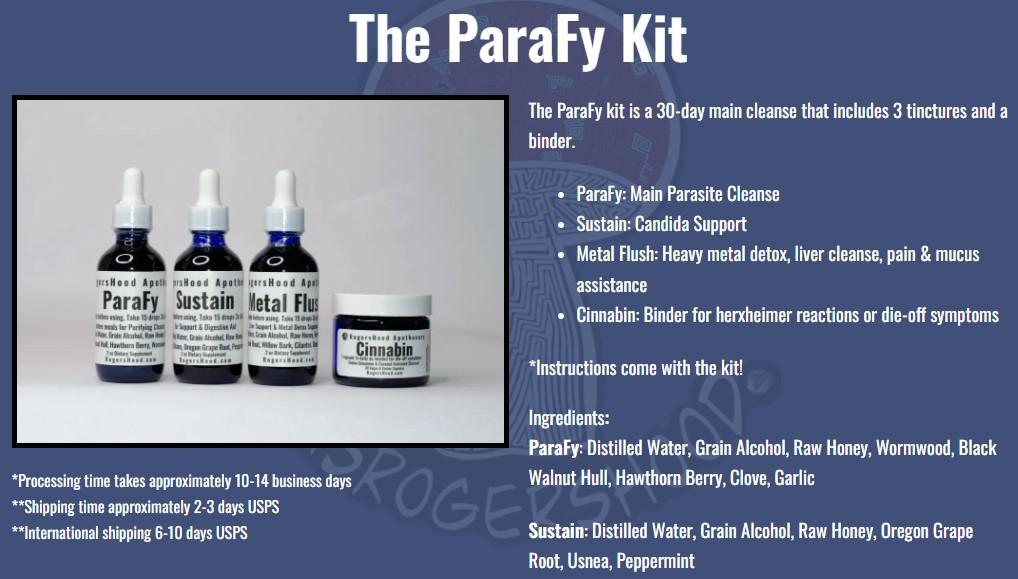Lettuce Grow Reviews: In terms of yield and pace, my year-round indoor garden outperforms my greenhouse. My limitations irritate me as a home gardener. I’m limited to just six plants that can endure extreme temperature variations because I only have a four-month growing season and a small Greenhouse in my backyard (kale, for example). For years, I’ve wanted to set up an indoor growing system but have never had the space.
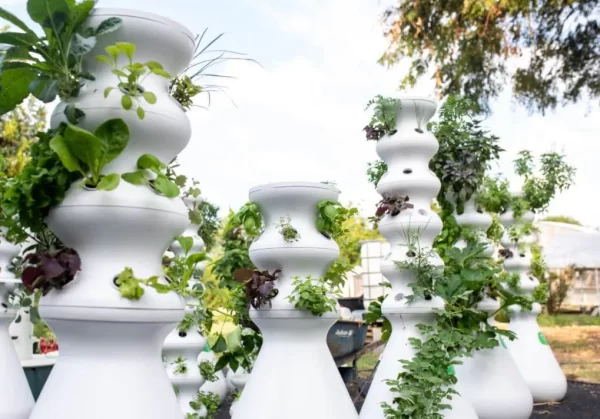
In just five weeks, I was able to grow and harvest tonnes of leafy greens, herbs, and vegetables thanks to the Lettuce Grow app. One of the initial items from The Farm Project, co-founded by actress Zoey Deschanel, is hydroponic indoor and outdoor food production.
Advantages and disadvantages
My 24-plant system, for example, costs $500, plus an additional $200 or so for the glow rings. The garden is of good quality, and the pumps and timers are far more sophisticated than I had anticipated. If you’re still undecided, the 12-plant system is comparable to other AeroGarden indoor gardens in terms of size. For some folks, the sound of the water pump may be too much. It sounds like a soothing indoor water fountain when you chat or watch TV, but it becomes old after a while, especially if the hydroponic watering system is set to run every 15 minutes or so. I’d wear a heavy sleeping mask instead of glow rings if I had to wear them in a studio flat.
Is it really worth it?
Yes, if you live in an area where the harvest season is short. My lack of year-round living space makes gardening difficult. Even if my backyard is covered in snow for six months of the year, I can grow fresh vegetables for salads and sides with Lettuce Grow. If you can afford it, the farmstand can give you joy and nutritious food.
Setup
The farmstand is available in five different sizes (12 to 36 plants) and only takes up a few square feet of floor space. Because my environment is dark, I used grow lights to test a 24-plant Lettuce Grow. Because the garden is roughly two feet square and must be plugged in all the time, I placed it in a corner with plenty of room on all sides. It’s just the right size for a studio apartment. The Lettuce Grow gardens come with easy-to-follow directions and a limited number of components. It has a base, water pumps, tiered planters, and grow lights that can be added.
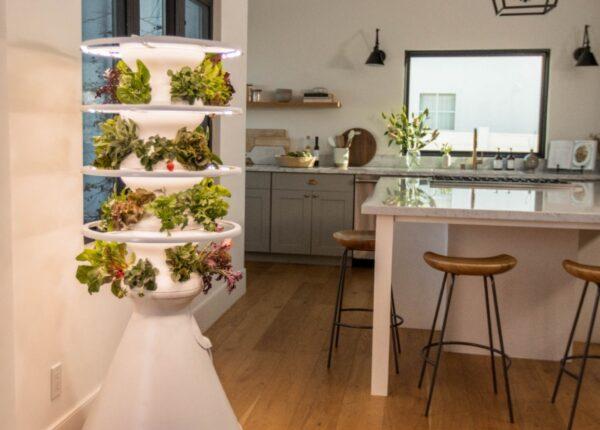
With a one-liter watering can filling the water reservoir took nearly 20 minutes. It would be much faster and easier to fill it with a hose. I received seedlings for leafy greens, herbs, broccoli, and sweet peas after completing an online questionnaire, each in its own compact, well-protected packaging. It’s a good idea to put dog-friendly plants in the lower rows. After that, there isn’t much to do. Checking the water level, adding fertilizer, and monitoring the pH are all weekly duties. Simply add a scoop of the included “pH Up” or “pH Down” chemical if your pH is too low.
Make sure the leaves aren’t directly touching the lights while using grow lights. Long-term contact with your leaves may result in mild burn marks. It won’t hurt to wait a day or two, but don’t allow the leaves to touch the lights. My plants grew quite quickly. Herbs took less than two weeks to mature, whereas greens like kale and lettuce took about three weeks. In less than a month, green beans and sweet peas bloomed, followed by little green peppers five weeks later. Sweet peas and most lettuce leaves grew in half the time thanks to the farmstand.
Twenty-two of the twenty-four plants survived. The koji tatsoi (broccoli and spinach) was a complete failure. It could be too much sun or the environment where I live, according to the Lettuce Grow team. I’m not sure how my plants would have fared without the grow lights, but the Lettuce Grow plants matured much faster in my greenhouse. Despite being planted two months earlier, the green beans at the farmstand have exceeded the kale, tomatoes, and green beans in my outdoor greenhouse.
How Does a Lettuce Grow Farmstand Work?
The Farmstand is a hydroponic indoor/outdoor growing system. By regulating the pH of the water between 5.5–and 6.5, the Farmstand provides plants with the nutrients they require to develop and thrive without the use of soil. Fill the base with 20 gallons (75.7 liters) of water each growing season. For me, tap water was sufficient. If the pH of your tap water is off, you should drink bottled water instead. Water is pumped up the center of the stand, distributed to each plant’s root system, and then filtered back down to the base.
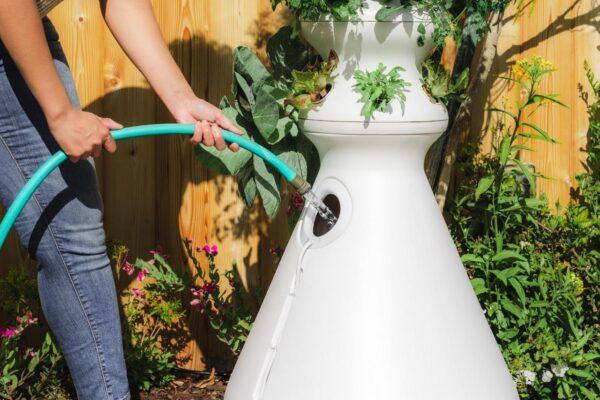
While the water is being filtered and reused, it should be added every few weeks. The lights and pump are controlled by timers that are plugged into a power socket. Lettuce Grow’s suggestions are managed by manually setting timers that control the water pump and illumination. Because the timers are distinct from the Farmstand equipment (but still included), you can opt to replace them with smart plugs or other timers. You’ll need to feed the water on a weekly basis in addition to topping it off. If you’re using the Farmstand indoors, don’t forget to pick up some Glow Rings to ensure your plants get enough light to grow.
Lettuce Grow recommends 3–4 month growing seasons followed by a complete reset, which necessitates disassembling and cleaning the equipment appropriately. Although the nutritional blend may have aided my plants’ success in a dark area of my home, I can’t attribute their survival only to nutrients. Although the lights are costly, they ensure year-round growth. Even in a well-lit home, seasonal changes in sunlight make some crops impossible to cultivate. If your home’s sunny area isn’t as sunny as intended, you can always buy them later.
Maintenance and Harvesting
This app will send you reminders to take your supplements as well as helpful instructions and suggestions. It also includes a useful plant identification tool. This is done once a week, however, the amount of nutrients varies. Lettuce is the simplest and most popular crop to grow. There are so many different lettuce kinds! After that, I added a flower and a couple of lettuces. If you wanted to, you could create a floral tower! I wanted to begin small and see how things developed. I had the honor of harvesting the lettuces first. For weeks, we’ve been eating fresh salad. I select a few and return them when we require more, allowing them to mature.
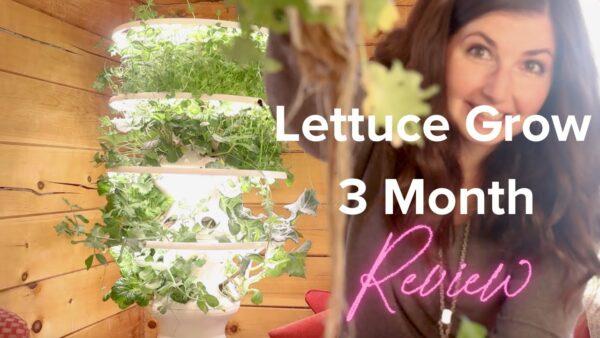
What are your alternatives?
As much as I adore my Lettuce Grow system, there are plenty of other excellent solutions, such as those listed in our best indoor gardening guide. If you’re on a budget, MiracleGro AeroGardens are a good option. These low-cost countertop hydroponic systems come in a variety of sizes. My peppers, tomatoes, and cucumbers haven’t produced anything yet. Their growth is visible, but I have yet to reap any benefits.
In conclusion,
When people came over to view my Lettuce Grow Farmstand, I used to become really enthusiastic. The futuristic stand uses a small pump to keep the roots moist and free of soil while growing plants hydroponically. It’s a terrific way to introduce your children to sustainable gardening and fundamental duties if you have them. It’s a smart investment for home gardeners because it only requires water and seeds.


